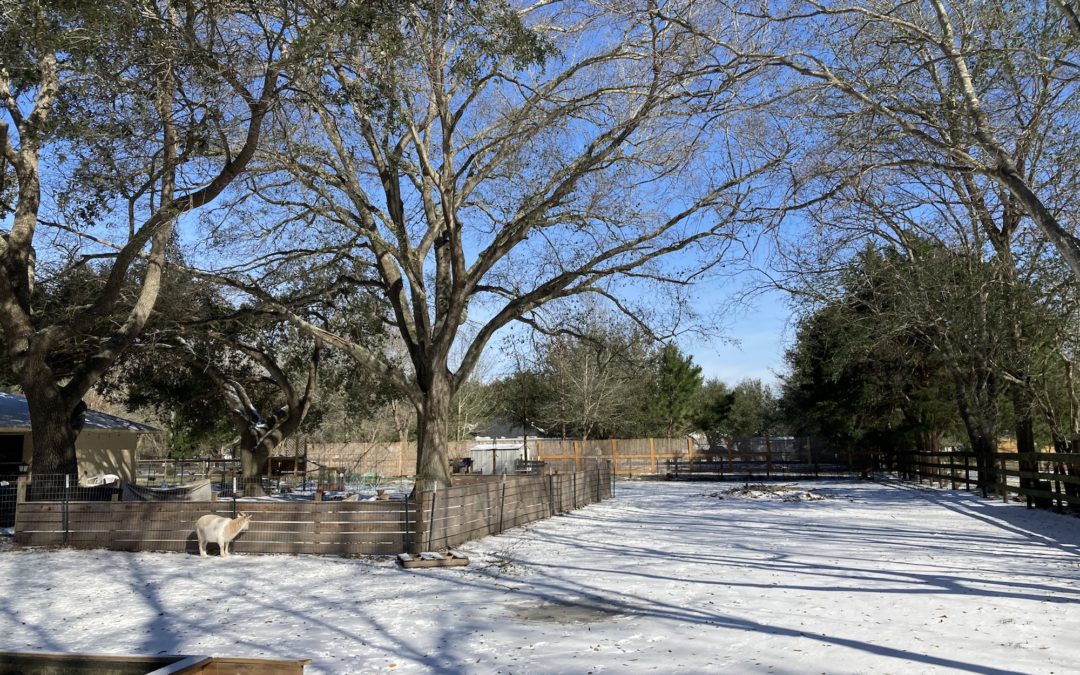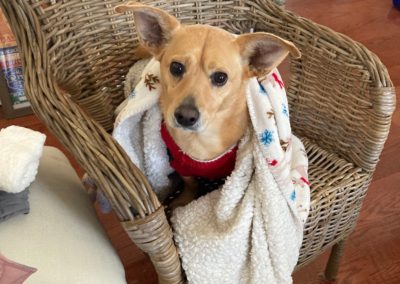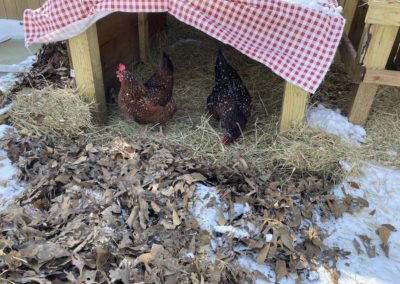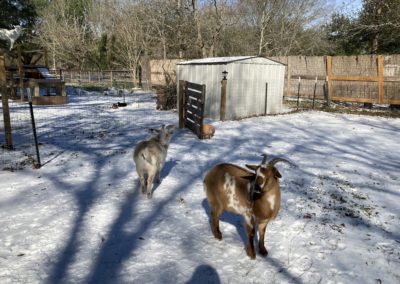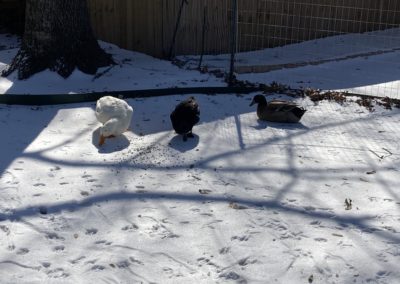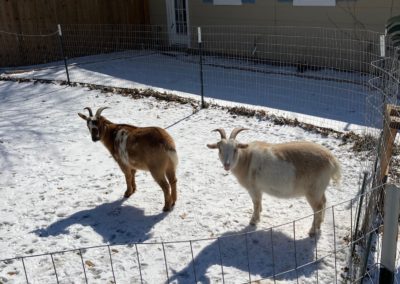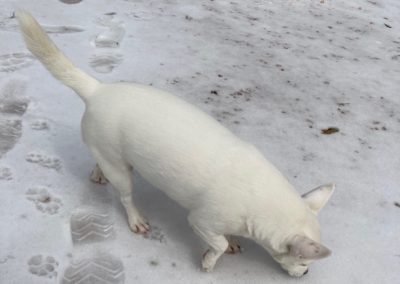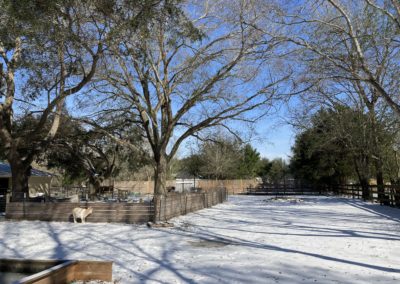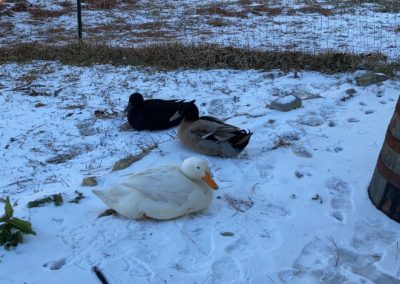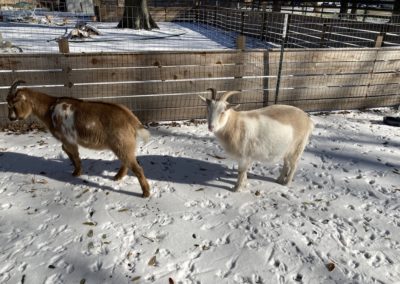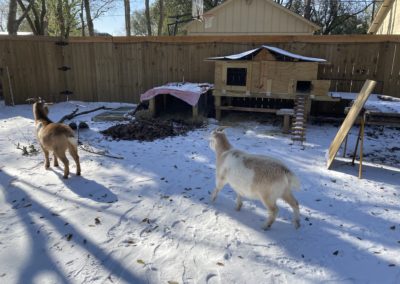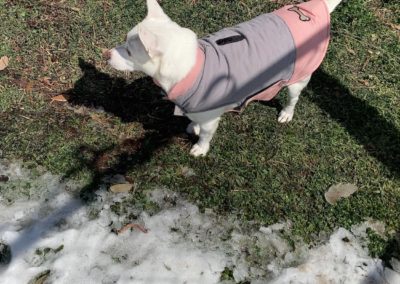Wow. The last couple of days have been insane. From experiencing inches of snow in Texas to getting all the plants and animals ready for the freezing temperatures, it’s been crazy.
As soon as I heard there was going to be snow I was really excited, but I knew that our plants and animals wouldn’t survive if they weren’t properly protected from the cold and precipitation. So, my dad and I did a couple things to prepare everyone and everything. This post is also meant to serve as a mini guide in case this sort of situation happens to you.
First off, the plants. We have a couple of young fruit trees in the front yard, some lavenders, parsley, hydrangeas, olive trees, rose bushes, raspberries, and a few other plants around the property. Since this winter storm came suddenly and it’s uncommon to have such cold weather in Texas we were a little unprepared. Fortunately, we bought some plant covers and tree wrap from Amazon that came just on time. They’re a little more on the expensive side but work very well and protected our plants through temperatures lower than 14ºF (-10ºC), snow, rain, and freezing rain. We also improvised and had lots of cardboard boxes and plastic tablecloths laying around so we used those to cover the smaller plants like the hydrangeas. This worked well for some plants and less well for those that were right in the path of the rain and snow but I would still recommend using them if you have any because they’re better than no protection at all. For the smaller plants like the lavenders and the parsley, we had some plastic plant pots (the ones you get when you purchase plants from a store) that fit over those nicely. Despite the small holes at the bottom of those pots, they protected the plants really well and we didn’t lose any of them.
We had our first little peach growing on one of the fruit trees so we were hoping and praying that it would live through the storm and with the coverings on the trees it looks like it’s doing ok. We haven’t removed all the coverings on our plants but as far as I can see, mostly everything survived.
I wanted to make sure that the animals would be ready for the cold since they’re still young and this was going to be their first really cold winter. So, for the chickens I changed all the wood shavings and the hay that was in their coop so that it would be clean and dry for them. I set up a small food bowl inside their coop too since chickens eat 25-50% more food in the winter to build body fat and stay warm. Plus it was going to be harder for them to find food if the ground is covered in snow or ice. I refilled their water bowl with fresh water as well. It’s always important that your animals have water but during cold weather make sure that it doesn’t have anyway of spilling inside their homes as it can freeze and cause problems. If you are able to, getting a heated water bowl or an outdoor heater you can leave in/near your animal’s enclosure would be very helpful during the winter.
The ducks usually sleep outside wherever they choose to plop down together but since it was going to get very cold, especially at night, we decided to bring them back into their little house to stay warm. I also changed the hay and wood shavings that were in their house so that it would be clean and dry. Although ducks need water and enjoy having water at all times, I do not recommend putting any water in a duck house when it is expected to get below freezing because the ducks will spill it in their house which will freeze and then they could get cold. Also, never give ducks food without having a source of water for them too because ducks need to drink after/while eating otherwise they could choke. So, we gave them food and water before bed and in the morning.
The goats have a small shed where they go to stay dry when it rains. We just reinforced that by putting a bunch of hay stacks around the inside and floor to act as insulation. We made a wall of hay at the exit of the shed too so that the wind, rain, and snow wouldn’t get inside. I also left a water bowl inside their shed, making sure it couldn’t spill.
Everyone was a little wary of the snow at first but as the day went on they all started getting used to it and went about their day as usual. The ducks were actually happy to be outside. They were cold at first so they would take a few steps and then sit down to cover and warm up their feet up. The chickens explored the first day it snowed but were shivering a little and on the second day they didn’t even want to come out of their house in the morning. The goats don’t like water, so you can imagine how it must have been for them. They came out of their shed to walk around, eat, and just because they need to spend time outdoors during the day but they stayed away from the snow as much as possible. Jordan, our little dog, was very cold and barely went outside at all but Jeffrey explored and walked around for a bit.
In case you’re wondering, after quite a bit of research we decided to let our ducks and chickens roam the property during the day even in the snow and cold. But I highly recommend that you do some research about your animals beforehand as well. Whether or not your animals can survive the cold and be in the snow really depends on the species you have and how cold the climate actually gets. We have Speckled Sussex chickens and those are hardy so they adapt well to more extreme temperatures. Same with our ducks.

